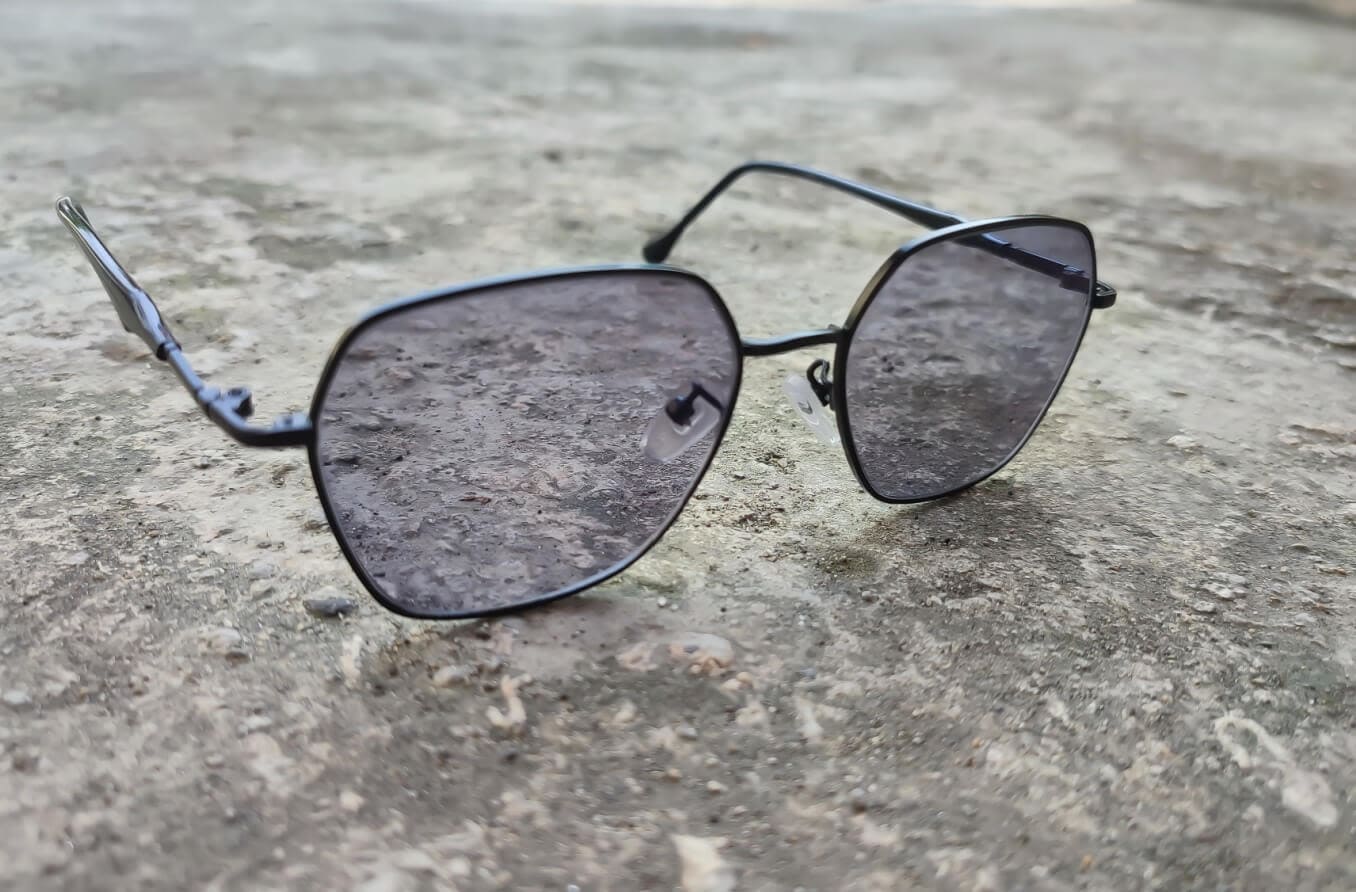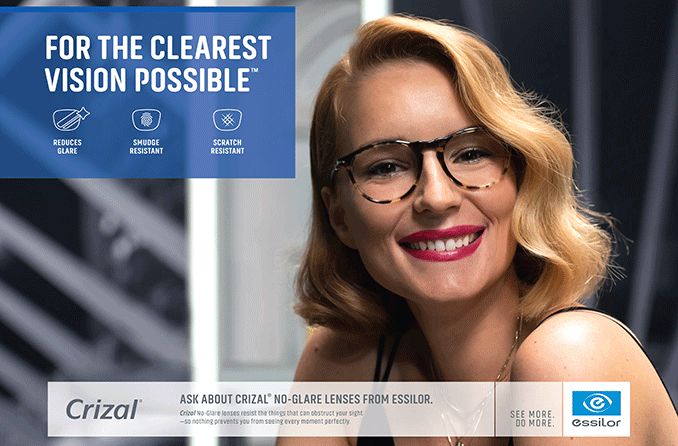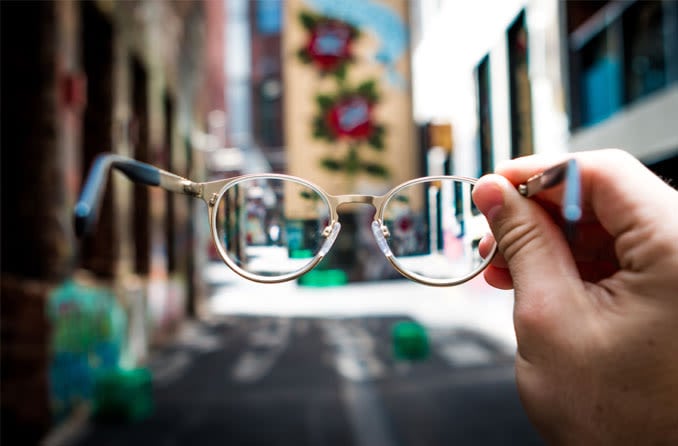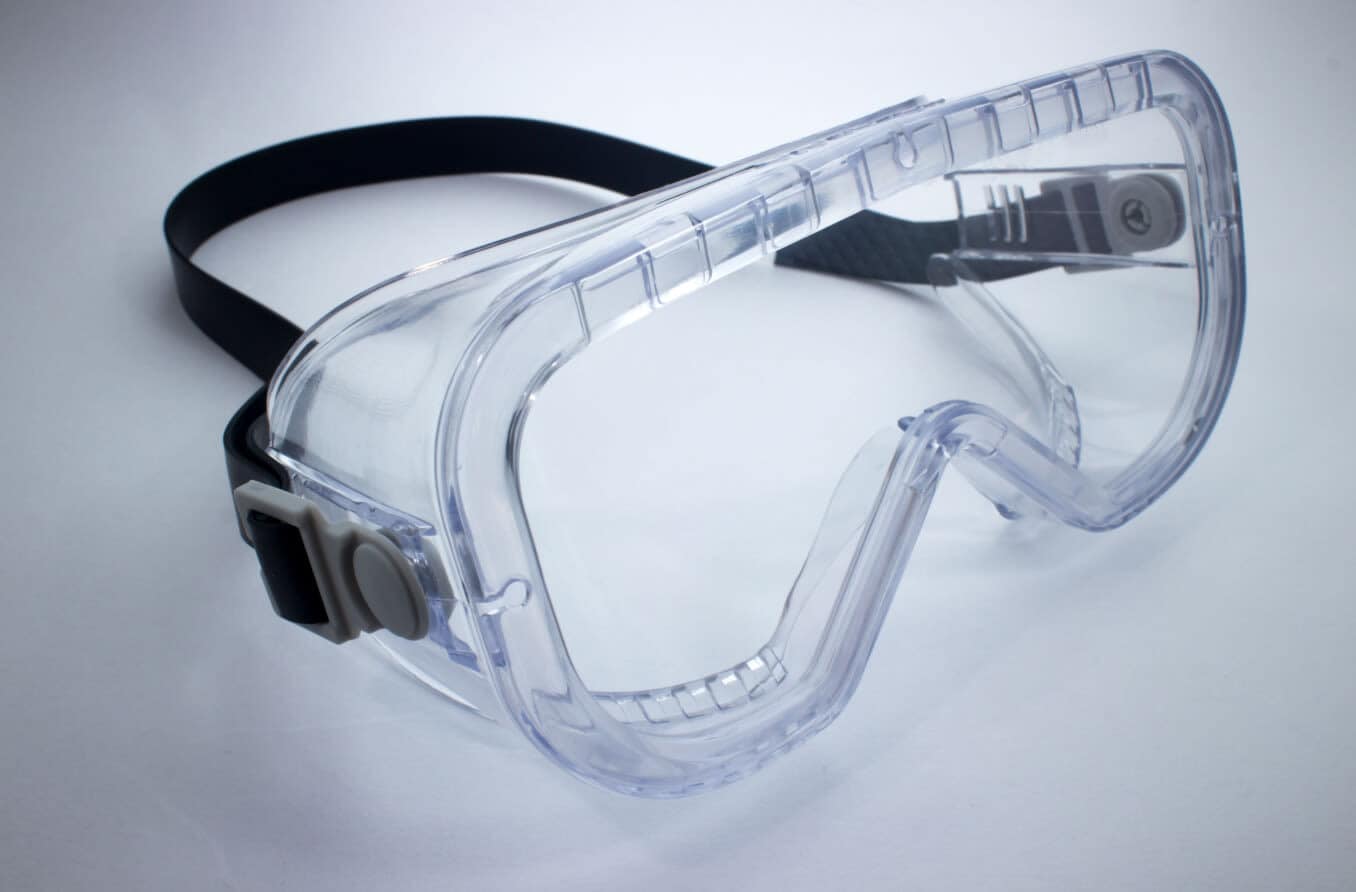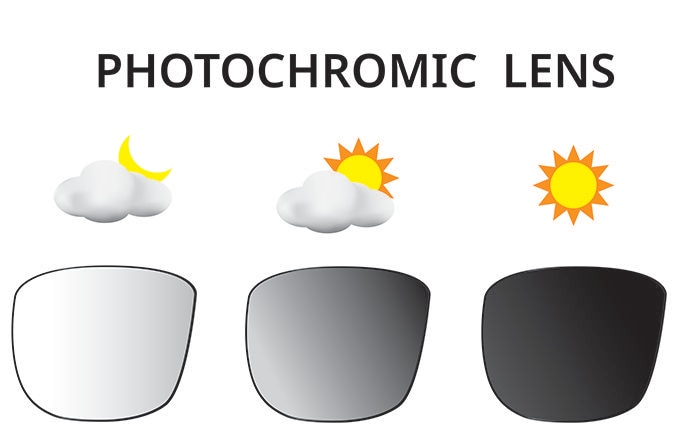Photochromic lenses are eyeglass lenses that are clear (or nearly clear) indoors and darken automatically when exposed to sunlight. Other terms sometimes used for photochromic lenses include "light-adaptive lenses," "light intelligent" and "variable tint lenses."
The most popular brand of photochromic eyeglass lenses sold in the United States is Transitions Lenses. Because of this, some people — including some eye care practitioners — refer to photochromic lenses as "transitions lenses" or "transition lenses." But there are other brands of photochromic lenses available as well.
Contact lenses can also now come with photochromic technology. Johnson & Johnson teamed up with Transitions Optical to develop Acuvue Oasys with Transitions, the first light-adaptive contact lens.
HAVING DIFFICULTY ADJUSTING TO BRIGHT LIGHT? Ask your eye doctor if photochromic lenses (in glasses or contacts) will help.
How photochromic lenses work
The molecules responsible for causing photochromic lenses to darken are activated by the sun's ultraviolet radiation. Because UV rays penetrate clouds, photochromic lenses will darken on overcast days as well as sunny days.
Photochromic lenses typically will not darken inside a vehicle because the windshield glass blocks most UV rays. Recent advancements in technology allow some photochromic lenses to activate with both UV and visible light, providing some darkening behind the windshield. Ask your optician for details.
Photochromic eyeglass lenses are available in nearly all lens materials and designs, including high-index lenses, bifocals and progressive lenses. An added benefit of photochromic lenses is that they shield your eyes from 100 percent of the sun's harmful UVA and UVB rays.
Benefits of photochromic lenses
Because a person’s lifetime exposure to sunlight and UV radiation has been associated with cataracts later in life, it’s a good idea to consider photochromic lenses for children’s eyewear as well as for eyeglasses for adults. Polycarbonate is the safest lens material for kids, providing up to 10 times the impact resistance of other lens materials.
Adding anti-reflective coating to photochromic lenses enhances their performance even further. AR coating allows more light to pass through photochromic lenses for sharper vision in low-light conditions (such as driving at night), and eliminates bothersome reflections of sunlight and other light from the backside of the lenses in bright conditions.
Though photochromic lenses cost more than clear eyeglass lenses, they offer the convenience of reducing the need to carry a pair of prescription sunglasses with you everywhere you go.
Photochromic lens brands
Popular brands of photochromic lenses sold in the United States include:
Transitions Gen 8 (Transitions Optical) — Transitions Gen 8 lenses, introduced in the United States in July 2019, are the fastest light-adaptive Transitions lenses available. Gen 8 lenses get darker and become clear again more quickly — three minutes less for fade back than Transitions Signature lenses with Chromea7 technology and 30% less time for the lenses to activate.
Transitions XTRActive (Transitions Optical) — These lenses were developed for wearers who are light-sensitive indoors and desire a darker lens when driving and outdoors. Transitions XTRActive lenses have slight tint indoors to keep your eyes comfortable when exposed to harsh lighting (fluorescent lights, digital devices).
Transitions Vantage (Transitions Optical) — Transitions Vantage lenses have a slight tint indoors and polarize as they darken outdoors for greater glare control in bright, reflective conditions. This unique technology offers a high-definition visual experience since the polarization continually adjusts outdoors to match the level of reflective glare.
Sensity (Hoya Vision Care) — Introduced in the United States in April 2016, Hoya’s Sensity photochromic lenses feature trademarked technology that ensures the lenses perform consistently in varying climates and temperatures. Sensity lenses are available in three colors and are offered in a variety of lens designs, lens materials and anti-reflective coatings.
LifeRx (Vision-Ease Lens) — LifeRx lenses are made of polycarbonate and are available in photochromic tints in a variety of lens designs. The lenses take less than a minute to darken outdoors and fade back faster indoors than other photochromic lenses.
PhotoFusion (Carl Zeiss Vision) — Made in Germany, PhotoFusion lenses are available in a neutral gray tint for accurate color vision in all lighting conditions, also available in brown, “extra” gray, pioneer green and blue. The lenses darken up to 20% faster and lighten indoors up to twice as fast as previous Zeiss photochromic lenses.
ColorMatic IQ Sun 2 (Rodenstock) — Also made in Germany, Rodenstock’s ColorMatic IQ Sun 2 lenses are available in six photochromic tints, including brown, gray, orange and green.
SunSensors (Mitsui Chemicals) — Mitsui Chemicals acquired SunSensors lenses originally manufactured by Corning. SunSensors are made of mid- and high-index plastic materials and are available in gray and brown tints in a variety of lens designs.
PhotoGray; PhotoBrown; Thin & Dark (Corning) — These glass photochromic lenses offer superior scratch resistance but are significantly heavier and less impact resistant than other photochromic lenses. Corning’s Thin & Dark lenses feature a gray tint and are up to 30% thinner and lighter than conventional glass photochromic lenses, according to the company.
Corning created the first mass-produced glass photochromic lenses in the 1960s and continues to produce glass photochromic lenses in gray and brown tints.
Photochromic sunglasses
Photochromic sunglasses are primarily for outdoor wear. They are not as clear indoors as other photochromic lenses, but they provide extra comfort in bright sunlight and behind the wheel.
Transitions Drivewear (Transitions Optical) — These polarized adaptive lenses are designed specifically for driving. They adapt to changing light conditions when worn inside a vehicle, enhance contrast, and improve visual performance for driving.
Photochromic lenses and blue light
Besides protecting your eyes from glare outdoors, photochromic lenses offer an additional important benefit — they help filter blue light.
Many digital displays emit blue light. But it is important to note that the majority of blue light exposure is from sunlight, even inside our homes and offices. Decreasing exposure to blue light can improve visual comfort, especially for people who spend prolonged periods of time using digital devices.
See your eye care professional to discuss your blue light exposure and which type and brand of photochromic lenses is best for your specific needs.
